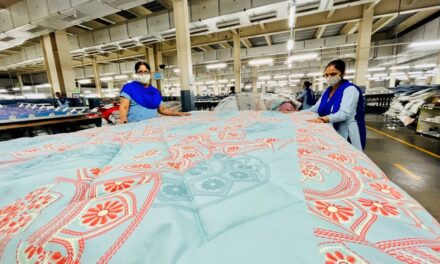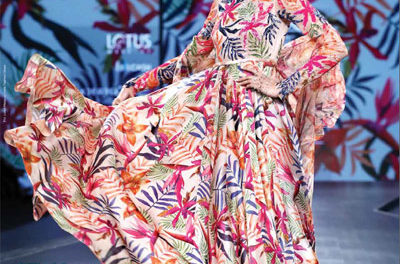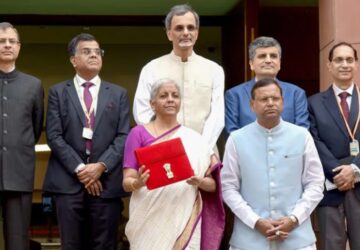 The recent virtual India – EU Summit has paved the way for a broad-based free trade and investment agreement that has held out promise but stalled for almost nine years now. Indian Prime Minister Narendra Modi and EU President Ursula von der Leyen addressed the summit. The EU Chief had even sought an “ambitious free trade deal” between the two nations. The summit discussions were very “fruitful,” Modi said after the event. The convergence of economic initiative is significant in the wake of the COVID-19 pandemic. The summit saw India and EU sign five documents.
The recent virtual India – EU Summit has paved the way for a broad-based free trade and investment agreement that has held out promise but stalled for almost nine years now. Indian Prime Minister Narendra Modi and EU President Ursula von der Leyen addressed the summit. The EU Chief had even sought an “ambitious free trade deal” between the two nations. The summit discussions were very “fruitful,” Modi said after the event. The convergence of economic initiative is significant in the wake of the COVID-19 pandemic. The summit saw India and EU sign five documents.
Both leaders agreed to enhance convergences to ensure a high-level protection of personal data and data flows between them. The move is significant in view of concerns over China’s state-sponsored data theft. Modi invited European companies for FTA in India taking into account India’s efforts to improve ease of doing business and regulatory environment.
The contentious issues are the lowering of the import duty on scotch whiskey, on which New Delhi is not averse to provided India’s concerns are protected. Items of great interest to India are textiles, footwear and leather, where it wants early market access and tariff cuts. These tariff cuts could be a major gain as it would help Indian goods compete effectively with exports from Bangladesh and other countries.
Earlier, negotiations had got stalled in 2013, as the two sides could not resolve issues such as tariffs on European cars and wine, data security and India’s pitch to include services and more visas for Indian professionals in the agreement. Thereafter several attempts were made to continue the talks without much avail. Among the roadblocks was India’s decision to cancel bilateral investment treaties with 22 EU countries in 2016, slowing down interest from European companies to invest.
Narendra Modi’s keen interest in the agreement is because it promises to make India more competitive in EU and boost exports. That will happen as the tariffs imposed, say on readymade garments, will get charged at 9.6 percent against 12 percent before. This is after a 20 percent deduction on the tariffs slapped by EU instead of getting benefits under EU’s Generalised Scheme of Preferences (GSP) Plus scheme. Like readymade garments, tariffs on fabrics at 8 percent and yarn at 4 percent will be off. The India – EU textiles and clothing trade is valued at dollar 10 bn. If the FTA is concluded, then it has the potential to increase India’s exports to EU by at least $3 bn per year.
India has been facing a “discriminatory” tariff regime visà-vis its competitors such as Pakistan and Turkey. Bangladesh also receives duty-free access on its garment exports to the EU and once the FTA comes into force, India will be at par with least developed countries (LDCs) such as Bangladesh and others and secure duty free access in the EU. It is to be noted that the selective preferential duty access has resulted in India already losing out 37 fabric items to Pakistan on account of zero – duty access to Pakistan granted by the EU.
It is also to be noted that besides LDCs, India has to compete with countries having regional trade agreements with the US such as Honduras, Dominican Republic and others which enjoy duty-free access in the US and EU. The result: India has to content with a high duty regime. Then there are small FTAs being signed among WTO members. This has limited trade opportunities outside WTO.
Moreover if the former US President Donald Trump had ratified the first mega Trans Pacific Partnership (TPP) India would have faced severe competition from Vietnam and Malaysia, two major textiles exporting countries that were among the dozen members of TPP. Other members are textiles importing countries. These are besides the US and Canada, Mexico, Chile, Peru, Japan, Australia, New Zealand, Singapore and Brunei.
India is not a member of TPP. The big attraction provided by TPP is the zero duty concession. Vietnam already has a large presence in the US market, but does not enjoy and tariff concession from the US at present. Its apparel exports are three times those of India. Bangladesh, too, has significantly larger exports and higher growth rate than India, without any tariff concession. Malaysia is not a major player now, but the zero duty access under TPP would also have pushed up its exports, which are worth over half billion US dollar.
Mexico, on the other hand, used to get zero duty as well as quota-free access in the US market on implementation of the North America Free Trade Agreement (NAFTA). It was also the largest supplier of apparel. Now China, India, Vietnam have been able to overtake Mexico over the past few years while suffering full import duty on their goods. The quota – free regime was terminated in December 2004.
The Indian textiles and clothing sector currently accounts for about 4 percent of the country’s GDP, 14 percent of industrial production and less than 12 percent of exports. It employs 35 million people directly and another 45 million indirectly, thus emerging as the largest employer in the manufacturing sector. It is also to be noted that the sector provides jobs mostly to uneducated and poor rural workers, especially women. It plays an important role in our society as clothing is next only to food among the primary requirements of the masses. Despite such an impressive contribution to the economy and the society, the industry should have received more attention from the government. India’s major competitors in the global market are China (for fabrics, home textiles and garments) Bangladesh (for garments) and Pakistan (for yarn and home textiles). India’s exports of textiles and clothing have taken a severe beating, especially after the outbreak of the coronavirus pandemic.
Conclusion: The India-EU summit last year and forthcoming one will pave the way for a free trade and investment agreement between the two countries. Notwithstanding the global pandemic that has ravaged the EU and other economies, efforts should be made to continue negotiations so as to clinch the FTA which will be advantageous to both

















